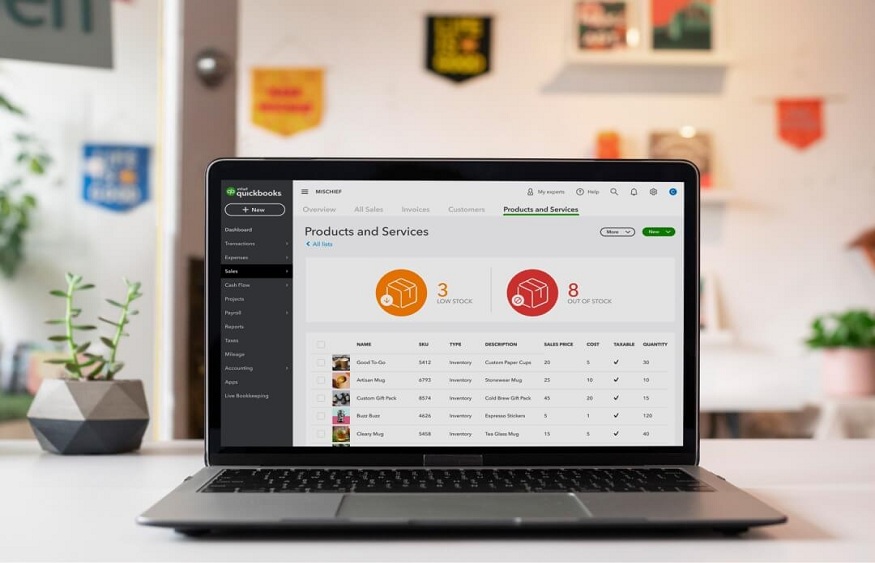An automated inventory management system is a software product that can perform numerous repetitive inventory management operations without much assistance from a human. Such software is used by retailers, distributors, wholesalers and other firms that need to track inventory. Only businesses with sufficient resources and inventories could initially benefit from these solutions.
However, SMBs now have considerably greater access to inventory management solutions. Now, even businesses with a small number of shares can benefit from them. However, 43% of SMBs don’t even attempt to track their inventories.
The initial step to automating your business is to choose the best inventory management software that syncs in real-time and ensures seamless transactions whether customer shop offline or online. Different businesses have different needs; for example, retail shops and restaurants have different needs. So, it is crucial to choose the best inventory management software that fits your business needs. Let’s discuss the features, needs and benefits of using an automated method for managing your inventory.
Why Is There a Need for Automated Inventory Management?
Consumers today have high expectations and they want to place orders from their preferred channels by choosing the shipping or pick-up option that best suits them.
Retailers must have control over what is being marketed on their channels and at what price to accurately restock and maintain stock levels to satisfy these expectations and get the product into the consumer’s hands as per the requirement of the customer. Automation is useful in this situation. Ecommerce retailers are better able to meet these expectations. If you are at b2b wholesale business, the you must need the automation of your ecommerce store.
Automation and inventory control capabilities enable businesses to deliver goods to customers when they need them and manage their marketing spending. For instance, the shop would be immediately aware if a certain product was out of stock.
For example: If someone is using paid Google ads for digital marketing of their products and the product is out of stock, automation can alert you to stop the campaign. Itl not only saves your money but also saves the precious time of your customer.
What Are the Features of the Best Inventory Management Software?
The ability to order the appropriate merchandise at the appropriate time depends on the systems and tools for running a successful e-commerce firm. To quickly and efficiently fill orders as they come in, you must have the necessary number on hand. All the tools you’ll need to reconcile your sales and stock levels across your locations will be in good automation software.
Real Time Order View
Having the right amount of stock on hand and this feature goes hand in hand. For automated inventory management to work, a real-time order overview is essential. It contrasts the potential to set up reordering trigger events with the stock that is currently on hand. Even better, an automated system can send orders straight to the vendor, saving your team from having to complete a manual purchase step in the inventory management procedure.
Predicts Supply & Demand
Supply and demand forecasting can be aided by sophisticated software that examines sales patterns. This makes it possible to store seasonal demand items, such as numerous retail goods during the holiday shopping season, at levels high enough to meet demand and allow for a return to normal levels following the sales rise. By analyzing sales and inventory levels across the board and automatically anticipating optimizing stock levels, automation software can help businesses increase their bottom line.
Targeting Copy Audience
To target different groups, retailers frequently utilize numerous languages. Customizing bulk listings via automation tools to fit various channels can be helpful. For example, you wouldn’t want to address a customer with the same material that you would an older audience. Automation makes it possible to present distinct listings for various websites and mobile applications. Technical specifications, Dimensions and environmental credentials are among the fundamentals that would remain consistent, but the language would alter to speak to the audience reading it. Pricing and promotions can be adjusted automatically as per the need.
Automating Workflow
The capability to automate tedious and repetitive activities is a crucial component of any decent automation software. After the buyer makes a purchase, a sophisticated system should work in the background. Once the order is placed, the programme establishes workflow guidelines for effective fulfillment.
Group Listing
The capacity of automated software to group listings is an additional useful feature. This implies that you can group related goods or work well together. The team might then stock more of a certain category due to purchases of one product alerting them to an increase in demand. The shop may stock up on the recommended substitute if replacement stock for a particular item is not readily accessible from a supplier. Another option with this functionality is to note low-stock items such as “selling fast” or “limited availability” to build urgency and manage expectations.
Benefits of the Automated Inventory Management
The automated inventory software can be used to do numerous business operations for the D2C business and retailers such as:-
- Automating Purchase or replenishment orders
- Multi-channel inventory management
- Inventory tracking warehouses
- Assigning fulfillment operations
- Automated delivery of customer orders
- Syncing order and inventory data throughout all sales channel
Conclusion
The capacity to automate redundant procedures, finance-related business processes and manual operations where the margin of error must be zero comes with smarter solutions.
The cost of an inventory management solution will greatly rely on the size of your company, the volume of orders, and the features you need. Some open-source, free options are available for a few extra functions, such as cloud-based inventory management software.
An automated inventory system with the throttling restrictions, data fields, and functionality that high-growth companies demand will be quite helpful for businesses that move beyond that and don’t meet the criteria above. It’s crucial to consider not only the cost but also the value in growth, profitability, and customer success that will arise from its adoption when evaluating cost-effectiveness.

